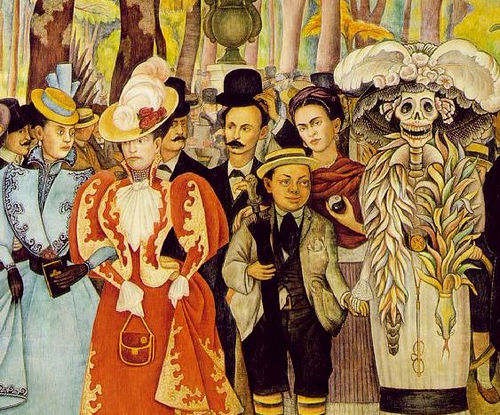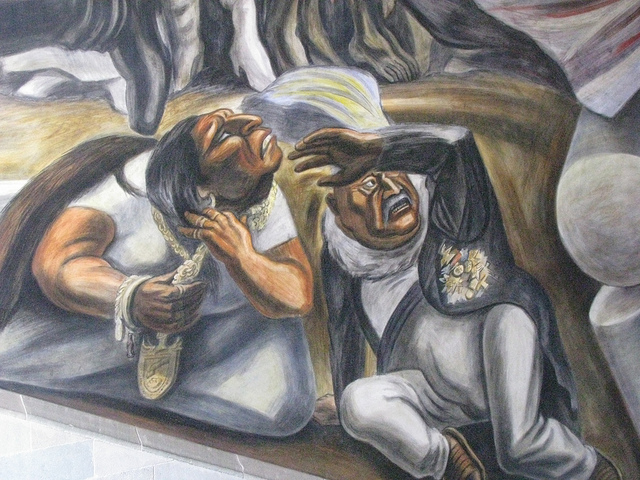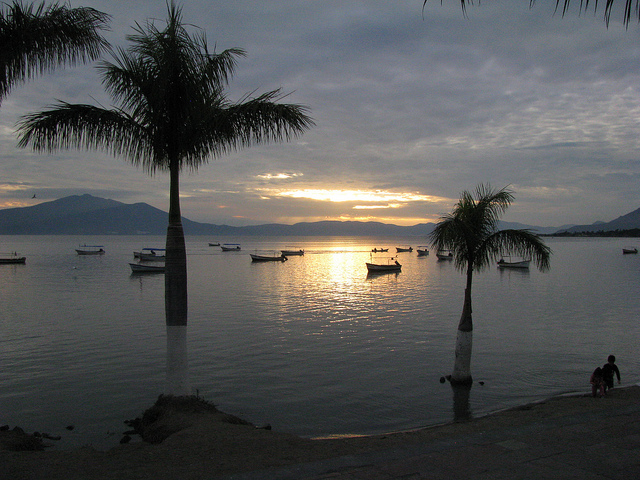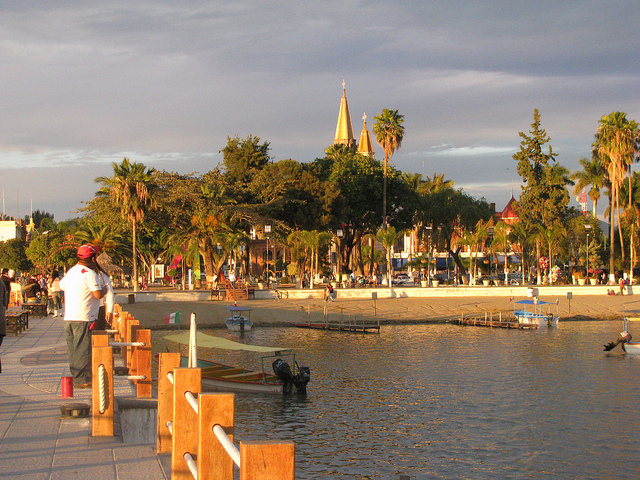After this morning’s exciting mountainbiking adventures outside of the city, this afternoon I would have a chance to delve into Guanajuato’s cultural attractions one last time e before my early evening departure back to Guadalajara. Among the many museums in the city of Guanajuato is the Diego Rivera Museum, dedicated to one of Mexico’s most fascinating and enigmatic artists.
Diego Rivera is probably Mexico’s most famous muralist and he was born in the city of Guanajuato in December of 1886. His often twisted relationship with famous painter Frida Kahlo is well-known, and as an ardent communist and perennially rebellious character, he is still a controversial figure in Mexico. In 1907 Rivera went to Spain and France where his artistic talent started to blossom. There he became acquainted with many of the new artistic movements, particularly Cubism, that had developed in Europe and met many famous painters, including Pablo Picasso.

Diego Rivera and his famous wife Frida Kahlo
In the 1920s Rivera was commissioned to paint several series of oversize murals in different locations around Mexico. An ardent communist, he travelled to Moscow in 1927 to take part in the ten-year anniversary of the October Revolution. In 1929 Rivera married Frida Kahlo, who was a young promising art student at the time. That same year Rivera was expelled from the Mexican Communist Party. In the mid 1930s he painted frescoes in Mexico’s Palacio Nacional, the Presidential Palace, which showcased his ideological view of Mexico’s pre-Columbian past. His political views were Marxist and he persuaded the Mexican president Lazaro Cardenas to give asylum to Leon Trotsky, the Russian Bolshevik revolutionary.

Detail of Diego Rivera’s most famous mural
During the 1930s Diego Rivera was invited to go to the United States where in 1930 he painted a mural at the San Francisco Stock Exchange. In 1933 he unveiled a series of murals at the Art Institute of Detroit, and then moved on to a project at the RCA Building at the new Rockefeller Center in New York City. Rivera, being his usual provocative self, had included a portrait of Vladimir Lenin in his mural which stretched the patience of his wealthy patrons a bit too much. They paid him the full price of the commission, ended his project and eventually destroyed his mural.
From the mid-1930s to 1943 Rivera found it difficult to get any commissions. He and his wife Frida Kahlo divorced in 1939 after Rivera, a notorious womanizer, had been involved in many infidelities and Frida herself had started an affair with Leon Trotsky. They ended up remarrying a year later. The pair certainly had a very turbulent private life. Rivera was reaccepted by the Communist Party in 1954, the same year Frida Kahlo died. Devastated by Frida’s death, Diego Rivera’s health started to decline and he himself passed away three years later. Today he is celebrated as one of Mexico’s most influential muralists, along with José Clemente Orozco and David Alfaro Siqueiros.
One of Diego Rivera’s portraits of Vladimir Lenin
In Guanajuato, the Museo Casa Diego Rivera is located in the house where Diego Rivera was born. Being part of a well-to-do family he grew up in a sizeable house with a large central courtyard. More than 100 original works of art by the master are on display, including works from his formative years when he experimented with Cubism. A diverse collection of landscape paintings, allegories, portraits, nudes and still life paintings provides insight into this brilliant artist’s mindset.

Our last walk through Guanajuato: the University
After leaving the museum we had one last chance to see the stunning buildings of the University of Guanajuato. We also made a stop at the Cathedral of Guanajuato, the Basilica de Nuestra Señora de Guanajuato. This impressive church has three entrances that are made of cantera stone and two asymmetrical towers grace its front façade. The Basílica de Nuestra Señora de Guananjuato was completed in 1671 and holds a 7th- century Spanish wooden image of Our Lady of Guanajuato, reputed to be the oldest piece of Catholic art in Mexico.

Interior of the Basilica of Nuestra Señora de Guananjuato
From the museum Sujei took me back to the Jardín Unión, Guanajuato’s main square. We decided to head into one of the eateries overlooking the main square. Frascati is located on the the south end of the square and from the upstairs dining room it offers a fabulous view of the square. We sat right in the corner in front of an open balcony and enjoyed a very tasty late lunch with Italian pizza and pasta.

Our great corner table at Restaurant Frascati with a view of Guanajuato’s main square
The late afternoon had arrived and on our way to the bus station we drove one more time through the unique tunnels of Guanajuato. My two-and-a-half days in this historic city, a UNESCO World Heritage Site, had exposed me to colonial history and architecture, live music, outstanding hospitality and some physical exercise in a gorgeous mountain setting. It was a city where I felt very safe and welcome. As I relaxed in the bus on my way back to Guadalajara, I knew in my heart that Guanajuato would rapidly develop in my of favourite places in Mexico.





